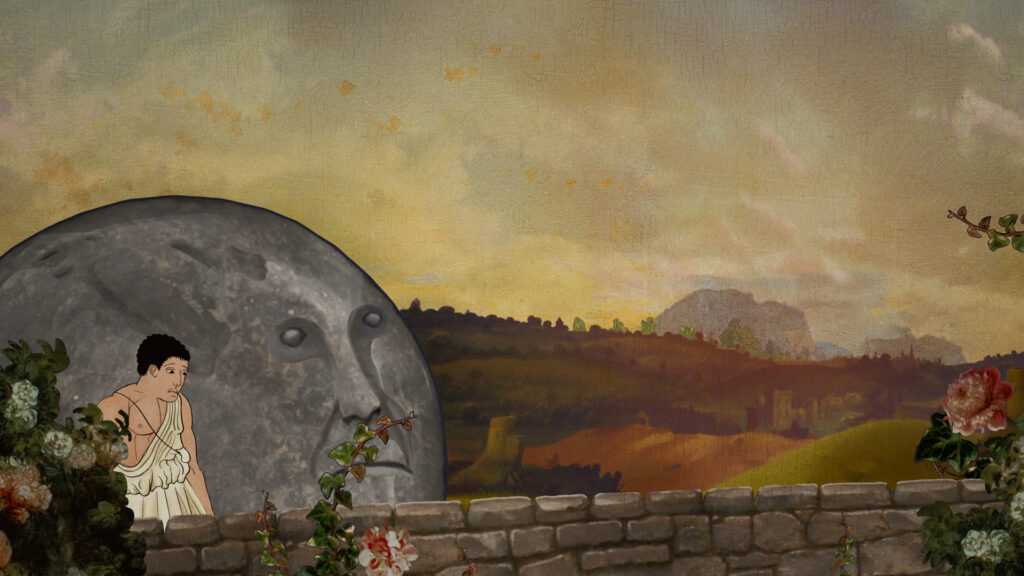
What began as a strange and absurd experimental game from ACE Team, has become a trilogy. The first two Rock of Ages have a simple yet compelling premise: tower defense meets Super Monkey Ball.
The appeal lies in the satisfaction of controlling an enormous boulder that crashes through obstacles. Being an unstoppable force that smashes through meticulously built structures is a desire that simply exists in the pit of every man’s soul.
Rock of Ages 3: Make & Break is a follow-up to an already impressive sequel. This is a tough act to follow, which disappointingly makes this third entry follow the tradition of the “weak second sequel”.
Rock of Ages 3: Make & Break
Developer: ACE Team, Giant Monkey Robot
Publisher: Modus Games
Platforms: Windows PC, Nintendo Switch, PlayStation 4, Xbox One (reviewed), Google Stadia
Release Date: July 21st, 2020
Players: 1-4
Price: $29.99

Like Back to the Future Part III and The Godfather Part III; Rock of Ages 3: Make & Break fails to live up to the legacy of its predecessors. The third entry could have gone in any exciting direction and possibilities were endless, but this is not what the designers were going for.
At first things seem like they are going smoothly. The “Terry Gilliamation” is consistent with the previous games, and the sense of humor is intact. Patricio Meneses’ music is just as electric as ever, with his eclectic interpretations of classical cues and nursery jingles re-imagined as operatic compositions.
Shortly after the tutorial is when the cracks in the boulder begin to show. Corners have been cut, and so many assets from the past games have been recycled. The lack of attention to detail is bewildering.
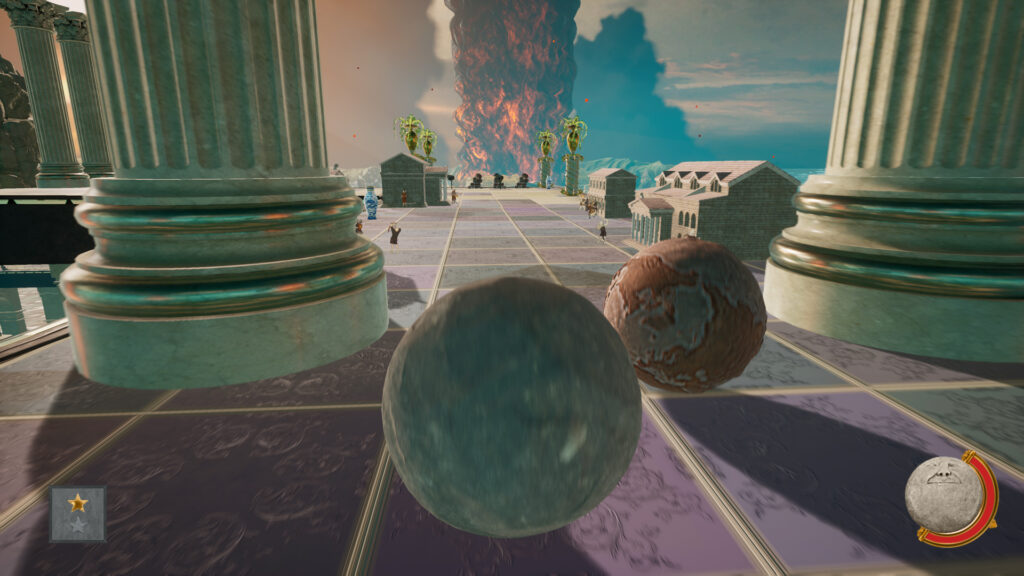
The general game loop of Rock of Ages involves two distinct phases: tower defense and rolling. Players will have until the construction of their chosen boulder to place traps and defenses on their course to protect their castle from the enemy boulder. When the alarm sounds, its time to roll and whittle away at the enemy’s gates.
During the defense phase, the player spends currency on different units that are selected when picking a boulder. Units like catapults, renaissance tank, cows or assault air-ships can be peppered through out the enemy’s field.
The best strategy will involve a cheekily placed fan that will blow a boulder as it lands from a tricky jump. Other times, swarming long straightaways with balloon-lions is effective at slowing down speeding boulders and buying yourself some time.

Rock of Ages 3 would have been welcomed DLC for Bigger and Boulder. There are hardly any new units for the defense phase, and some features have been removed. Aside from a few new modes, the overall package feels lacking.
You can’t switch boulders at the cost of gold between phases anymore like in the first game. There is a lack of unique visual flair to each themed location, with every area looking too similar to each other.
It is the main story mode where much of the disappointment lies. Outside of a few original boss battles, all the levels are made with the level editor. The options with this builder is much more limiting than they initially appear, making most stages feel samey.
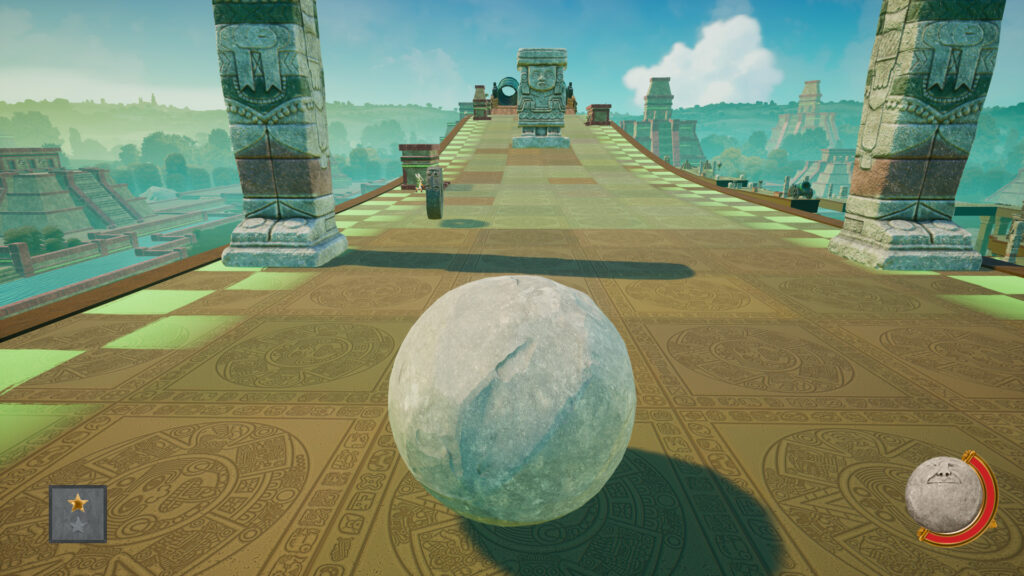
A bulk of Rock of Ages 3 was not actually developed by ACE Team, and it is felt through out this sloppy and unrefined product. The only aspect that feels consistent is the sense of humor and the quality of the animated vignettes that develop the story of Odysseus travelling through time.
The foundation of what makes Rock of Ages is still a strong skeleton to hold up all the rotting meat of Make & Break. The sensation of rolling a massive object at insane speeds and frantically steering it into or around obstacles is gratifying.
Sweat-inducing throttling of the analogue stick and repositioning the POV is very responsive and fluent. Teetering on the edge of a cliff while tumbling down at terminal velocity is profoundly butt-clenching yet hilarious thanks to the absurd visuals and naturalistic physics.
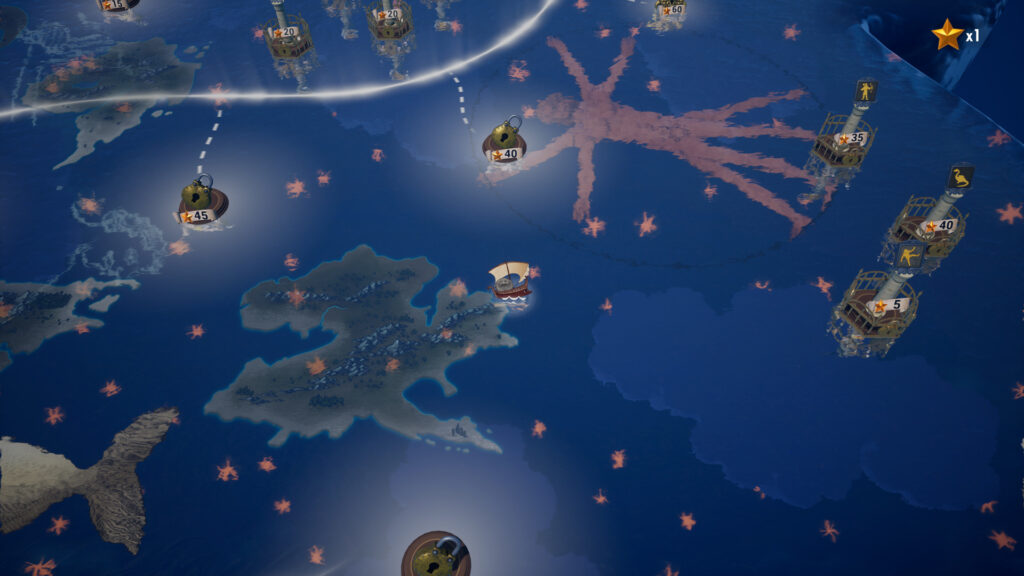
Each boulder handling differently only adds to the variety and play styles. A wheel may be faster, but is prone to loss of control; or you can roll with the block which barely rolls but smashes with max damage.
Most of the boulders are recycled from the previous games, with only a few new ones for Rock of Ages 3. The meatball gains mass as it takes damage, and causes more damage when it strikes the enemy gate. It is a worthy addition like most of the new boulders, but there are not enough.
The most notable new boulder is Humpty Dumpty, which is only usable in the mode specifically designed around it. Humpty Dumpty is played more like a time attack platformer than the typical game loop fans will be familiar with.

Humpty Dumpty will have to make it through sadistic gauntlets with only three lives, a double jump, and awful handling. The courses the developers made are infuriatingly designed, haphazard in their layout and bordering on amateur.
It does not help that there is a bug that happens randomly that can spawn you facing the wrong way or forget one of your check-points. These stages have crippled frame-rate from all the garbage that gets put into them, and the draw distance also becomes very low. The user created levels are unsurprisingly worse.
All stages in the story mode are made with the editor, which is a major selling point to Rock of Ages 3. The idea is that there will be infinite amount of content. There are too many limitations compared to the unique levels from past games, making them all blur together.
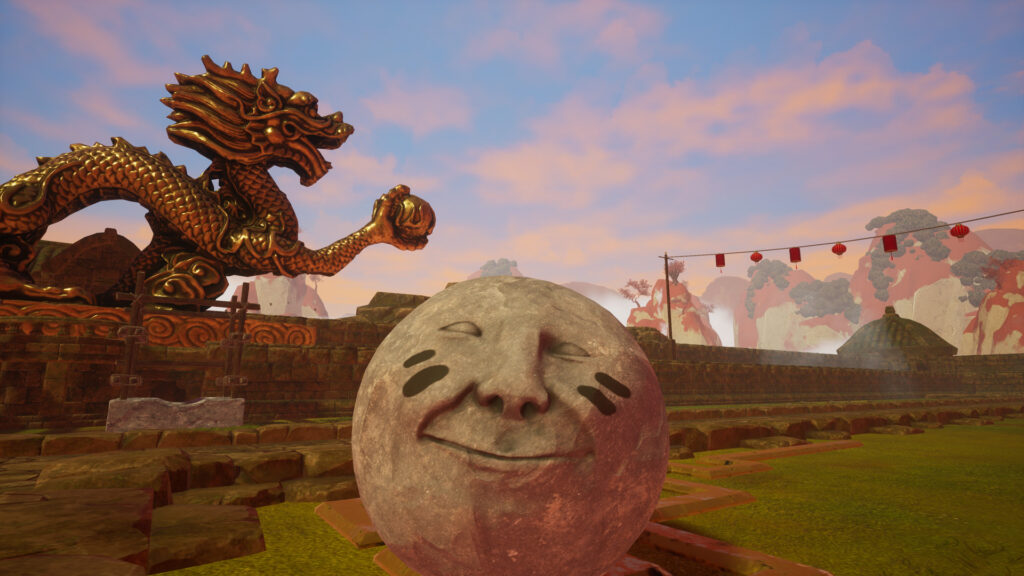
Making stages is also woefully implemented on a controller. The handling and manipulation is just unrefined for analogue sticks and is obviously designed around the freedom of a mouse and keyboard.
Stages used to have waterways, hazards, half-pipes and different kinds of terrain. Rock of Ages 3 loses this so as to not complicate the editor. The developers try to make up for the lack of interesting gimmicks by providing many modes.
The various modes of play are just the core game remixed or given bigger focus. Obstacle courses, Humpty Dumpty, and skee-ball put a greater emphasis on rolling; where the unit challenges and avalanche mode are pure tower defense experiences.
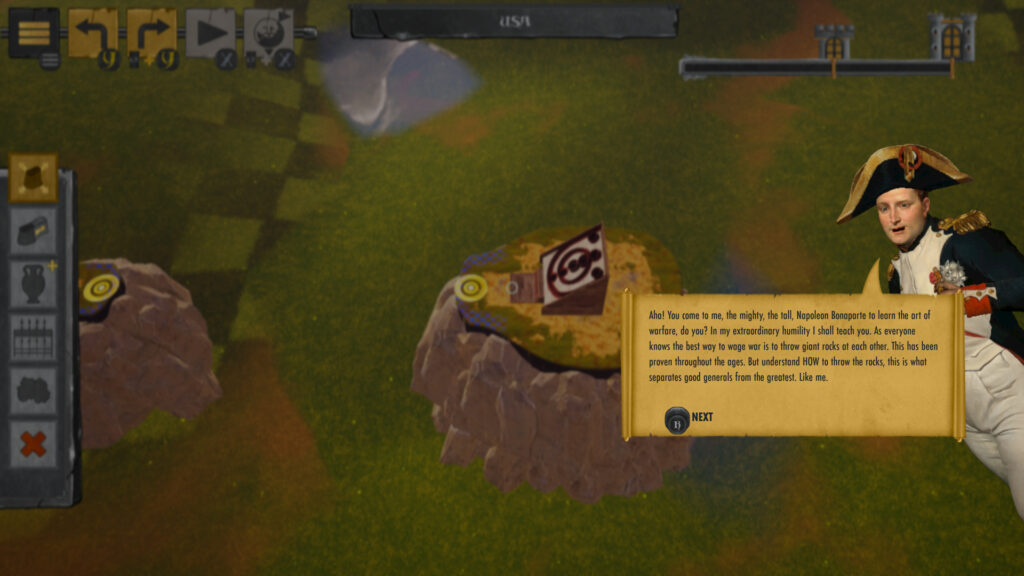
The beauty of Rock of Ages is the simplicity of it all. Spreading such a pure concept so thin feels like a desperate ploy to artificially give it value instead of doing the work.
Considering how much is recycled, it is disappointing that not all of the cosmetic customization options from past games are not included. The characters are glorified cut-outs, and not having all existing historical figures and legends included feels cheap.
The visual quality and presentation gets top marks. The artists have completely mastered the Monty Python cartoon style and it is as vibrant and striking as ever. Dreamlike and often surreal, the landscapes are impressive.
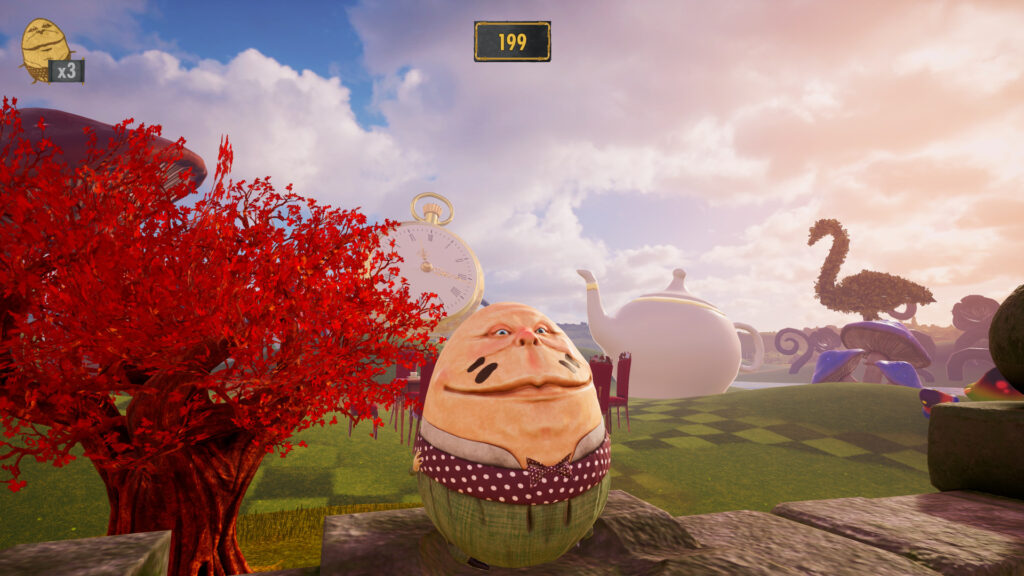
Everything good in Rock of Ages 3 is seemingly from past games. The best it has to offer is the same satisfying experience with only the editor and additional animated sequences being the new innovations.
Fans of the series might have to curb their expectations for Rock of Ages 3 since it is more like glorified downloadable content than a worthy sequel. If the developers had to recycle content, it would have been welcomed to make the story mode a greatest hits of all the best story stages from the first two games.
Making courses in Rock of Ages 3 is very cumbersome due to the controller limitations and is made worse by a camera that makes precision impossible. The few custom courses available on Xbox Live are incoherent messes of kaizo-trap nonsense.
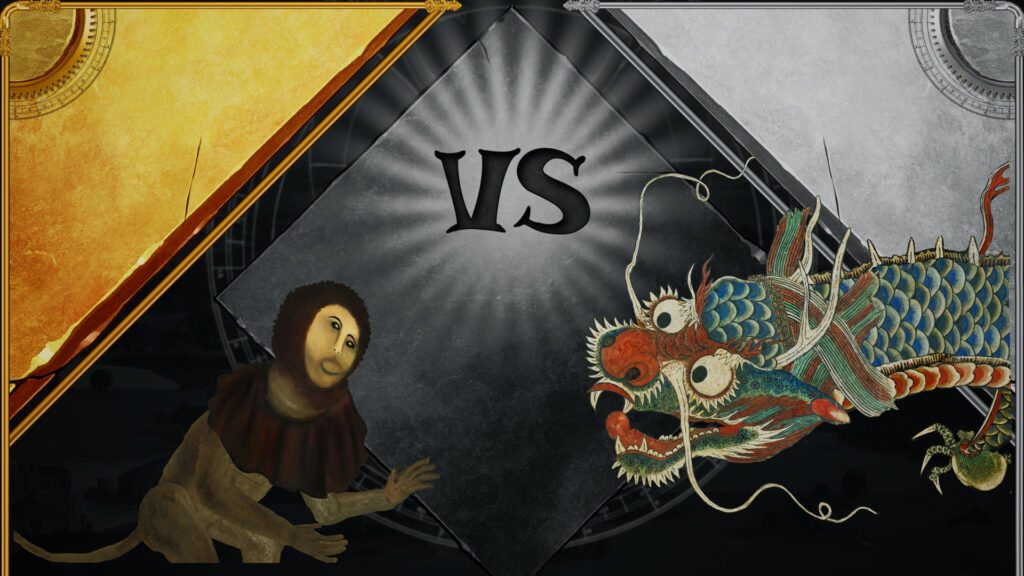
Fans of the first two games will likely enjoy the extra content in Make & Break, but it is not at all worthy as a sequel. Lacking original content makes it feel like an incomplete package.
Not going all the way with compiling its most popular set-pieces does not show Rock of Ages at its best. The foundation and core principles are what make Rock of Ages 3 enjoyable, not the desperate and shallow new modes.
Rock of Ages 3: Make & Break was reviewed on Xbox One X using a copy provided by the publisher. You can find additional information about Niche Gamer’s review/ethics policy here.